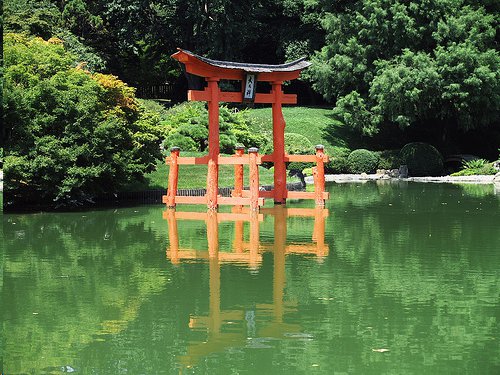A Walk Into Brooklyn

Typical tourists rarely visit all five boroughs that comprise New York City; sightseers ascend the Empire State Building or stroll through Central Park. Only the genuinely curious, however, will cross the East River into Brooklyn. For some, the decision to explore Brooklyn feels overwhelming: the most populous of New York City’s boroughs and the second largest in area, with an ethnic milieu representing virtually every culture.
On a sunny day, or balmy night, wander across the 1,595-foot Brooklyn Bridge for an unobstructed view of the Manhattan Skyline. Designed by John Augustus Roebling and completed in 1883, the Brooklyn Bridge remains one of the oldest suspension bridges in the United States. Well-lit pathways intended for walking and cycling run seamlessly from Manhattan into Brooklyn Heights. Lifelong resident Colin Laughlin asserts, “As a young adult, my neighborhood is small enough in scale to provide me with a good sense of community within this enormous city”. Two streets in particular contain a wide assortment of sights, smells, tastes, and treasures.
The first, Atlantic Avenue, is an east-west corridor through Brooklyn that has a considerable number of stores, restaurants, and bars. Sahadi Importing Co. (an indoor market colloquially referred to as “Sahadi’s”) offers delectable provisions from around the world, with a focus on Middle Eastern flavors. Treats to procure include spices, olives, dried fruit, candy, and a deli counter with prepared goods such as hummus and stuffed grape leaves. Just up the block from Sahadi’s, A Cook’s Companion does not offer food, but rather any gadget a cook could possibly imagine. Organized along the walls and shelves are items ranging from cookie cutters to oven thermometers. A favorite aspect of this shop: at the door they offer free copies of the magazine, Edible Brooklyn.

The second street to investigate is Smith Street. Intersecting Atlantic Avenue and generally smaller by comparison, the street is quaint; shops are cozy and artistic. A clothing and accessories store by the name of Smith+Butler offers highly fashionable yet utilitarian clothing and is a self-proclaimed “oasis for seekers of quality”. Located at the corner of Smith and Butler streets, the shop embodies the lively style and feel of Brooklyn. Of particular interest at Smith+Butler: the leather shoe and boot collection. And just across Smith Street is Clover Club – a cocktail lounge ideal for casual drinks or intimate dining. Ambience from the early 1900s, often live music from the same era, an inventive cocktail list, and snacks that are so much more than bar food, Clover Club is a little pricey but worth every penny. Collins & Fizzes such as the FloraDora, $12, will mellow you out after a long week at work or invigorate you before a night on the town. For pure gluttony and joy, order the Mac & Cheese, $11. Gruyere, white cheddar, heritage pork bacon, and garlic breadcrumbs baked together in a cast-iron dish yields the ultimate late night snack.
An adventure of a different flavor takes you east on the 2/3 train to the pedestrian-friendly area surrounding Grand Army Plaza. Find Prospect Park, the Brooklyn Botanic Gardens, and the Brooklyn Museum of Art all within close proximity. On a Saturday, acquaint yourself with Grand Army Plaza Greenmarket where venders gather every Saturday to entice passersby with fresh meats, eggs, fruits and vegetables, baked goods, and flowers. As the Greenmarket is set alongside Prospect Park, visitors can luxuriate at the market and subsequently walk into the park to relax alone or socialize with friends. To suit various moods and occasions, the original layout for Prospect Park included three distinct regions that still exist today – to the northwest, a meadow; to the east, a wooded ravine; and in the south, a lake. And should your energetic child or zoologist friend crave further stimulation, a quick walk through the park brings you to the Prospect Park Zoo. Open 365 days a year, the hours of operation change seasonally but ticket prices remain affordable at $8 for adults, $5 for children.

Capture a serene moment at the Brooklyn Botanic Garden. From 1910 through the present, the gardens have blossomed into a scientific work of art. The results are both exquisite in design and educational in presentation. Springtime positively requires you to amble past the pink and white blossoms of the Cherry Esplanade, while Conservatories such as the Bonsai Museum or Desert Pavilion provide enclosed activities for days when the weather is not so agreeable. The gardens can easily be added into your travel plans, unless you try to visit on a Monday – the Brooklyn Botanic Garden only opens its doors to the public Tuesday through Sunday. Admission is free for members and children, $10 for adults, and $5 for students and seniors. Nestled alongside the Botanic Gardens, the Brooklyn Museum of Art (BMA) houses the second-largest public art collection in the United States. Special exhibits such as Body Parts: Ancient Egyptian Fragments and Amulets and long-term installations such as The Dinner Party by Judy Chicago captivate art enthusiasts and students alike. Closed on Mondays, the museum has a suggested donation of $12.
As with any country, city, or town, it takes time to understand the natives and their motives; but take a moment to dig deeply into the world of true Brooklynites, and uncover a provocative and vibrant community of individuals.
Additional photos: Dan Patterson, Neg Foto: Flickr




























































































































































































































































































































